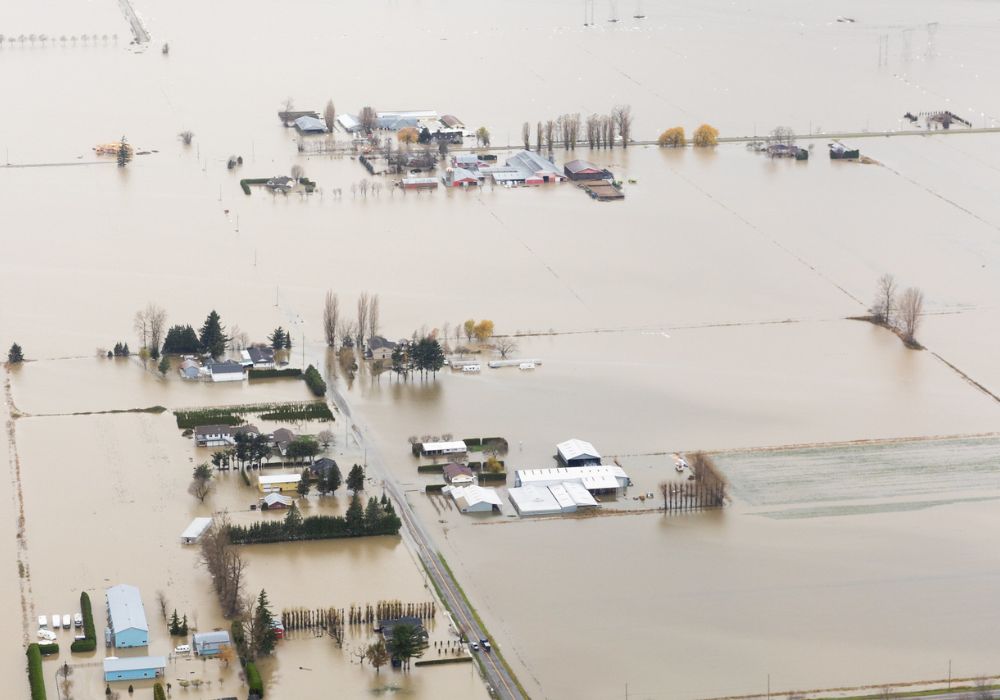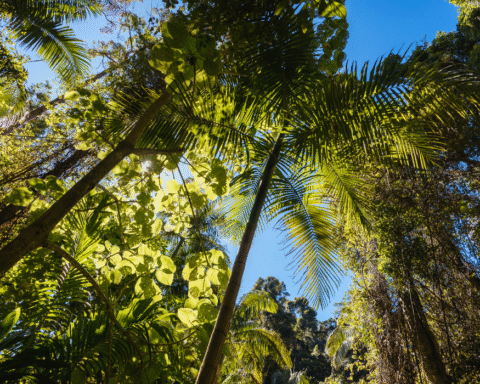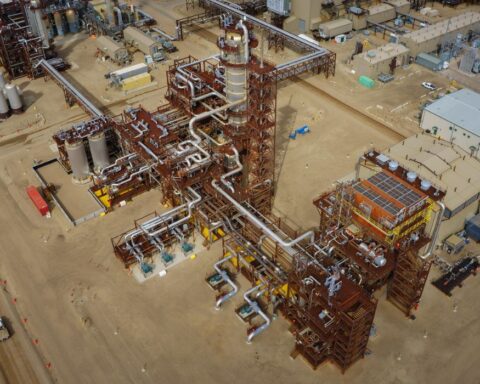There is one common denominator in this summer of climate catastrophes, and that is water. Whether inundated or parched, Canadian communities are grappling with a new water reality, one that comes with a multibillion-dollar price tag.
In July, a torrential downpour led to flash flooding across the Greater Toronto Area, causing extensive damage to homes, businesses and infrastructure. The costs of that single downpour are projected to exceed $1 billion, with the government and homeowners on the hook for a large part of the bill.
On the other side of the country, warm temperatures and low rainfall have led to severe or extreme drought conditions across much of British Columbia, Alberta and the Northwest Territories. The Mackenzie, Canada’s longest river, has seen an unprecedented drop of two metres, hampering navigation and access to remote Indigenous communities along its shores. The lack of rainfall is also contributing to increased fire risk, driving another record wildfire season, including evacuation of and extensive damage to the historic townsite of Jasper.
Estimates suggest that climate-fuelled water risks – droughts, floods and storms – could result in a loss of US$108 billion to Canada’s gross domestic product between 2022 and 2050, with multibillion-dollar losses projected for manufacturing, retail, banking and other key sectors. Flooding alone is expected to cost the Canadian economy more than US$30 billion over this period.
These are all just numbers. The lived reality is that climate change and nature loss are disrupting the global water cycle to a dramatic degree. This is changing the relationship of Canadian communities to water and exposing infrastructure vulnerabilities that have long been ignored. It’s also forcing us to consider an approach that works with the water cycle, rather than try to suppress it.
Floodplains naturally flood. Wetlands are naturally wet. They are well-equipped to absorb heavy rains. And yet we pave over and build housing in these spaces regularly. Introduce a downpour into an extensively drained and highly urbanized landscape and it will return to its old channels. (A map of buried stream systems beneath major Canadian cities – some in pipes, others in culverts – was compiled by CBC earlier this year.) Impervious surfaces such as pavement amplify these processes, preventing water from filtering into the soil.
Widespread flooding in British Columbia’s Fraser Valley in 2021 served as a dramatic illustration of this fact. Much of the flooded low-lying area – Sumas Prairie – was previously a lake, which was drained and converted to farmland in the 1920s. When heavy rains caused drainage infrastructure to fail, Sumas Lake returned to its previous footprint, forcing the evacuation of 1,100 homes and causing the loss of 630,000 livestock animals, and cutting off all highway routes between Vancouver and the rest of Canada.
A recent study by researchers at the University of British Columbia, along with members of the Sumas First Nation and other partners, suggests that returning the lake to its natural state would support climate adaptation, endangered species restoration and Indigenous reconciliation. This would involve buying out low-lying properties at a cost of around $1 billion, less than half of the $2.4-billion price tag of repairing dikes and installing a new pump station.
Whether they are framed as restoration, low-impact development, managed retreat or otherwise, the solutions are quite simple. Give water space on the landscape and build in a way that works with the natural water cycle.
RELATED:
- How letting water be water can lead to better climate resilience
- Hero: Meet the ‘sponge city’ guru who is climate-proofing China
- Water will be a critical piece of Canada’s net-zero puzzle
Erica Gies, author of Water Always Wins, refers to this as the Slow Water movement, working with local landscapes, climates and cultures to support local water supply, flood control, carbon storage and biodiversity. Counter to the established “grey infrastructure” paradigm of controlling water through dikes and pipes, Gies advocates for restoring a multitude of small areas for water to slow and stall throughout a region, analogous to a decentralized electrical grid.
Canadian cities are beginning to embrace this way of thinking.
In Montreal (which was flooded at the time of writing as a result of a large water-main break), a multi-year project is underway to construct more than 30 “sponge parks,” designed to help rainwater filter into the soil. These spaces offer numerous benefits, including a buffer against flooding and drought and cooling during heat waves. Scaled to the level of entire cities, as is currently being demonstrated in China, this represents an ambitious leap in the design of resilient municipal infrastructure that works with the water cycle rather than against it.
Similarly, the City of Vancouver has set a goal of capturing and treating 90% of its rainfall through green infrastructure. Green roofs, permeable pavement and rain gardens – all part of Vancouver’s strategy – aim to replicate natural water processes, drawing on plants, soil and built structures to capture and filter rainwater before returning it to waterways. All the while, working to keep water off city streets and out of basements.
Beyond cities, rural regions across Canada are beginning to explore green infrastructure opportunities, such as wetland and grassland restoration, shoreline stabilization and agricultural water-management projects. These initiatives have been driven as much by future planning as by near-term economic benefits. A recent analysis of natural infrastructure in the Prairies estimated the sector’s direct contribution to the region’s GDP as $4.1 billion, employing more than 33,000 people in Alberta, Saskatchewan and Manitoba.
These solutions present opportunities not only for communities and governments, but also for technology and business. Green infrastructure requires a network of advanced tools to model climate risks, monitor performance and manage assets. Just as Scope 3 reporting is driving companies to address greenhouse gas emissions in their supply chains, so is the focus on water for leading companies shifting upstream. In 2018, Anheuser-Busch InBev, one of the world’s largest brewers, set a water stewardship goal for all of the regions where they operate that are located in high-stress areas to have measurably improved water availability and quality by 2025. This has included a multilateral project to restore ancient water-harvesting systems upstream of Lima, Peru – the world’s second-largest desert city.
Canadian insurers such as Co-operators and Aviva are similarly looking upstream, exploring partnered restoration and stewardship initiatives to mitigate downstream flood risks for their clients.
As the impacts of climate change intensify, we must work with the water cycle to bring water back into our cities and onto our landscapes, (un)paving the way to a resilient future.
Alan Shapiro is principal at environmental consultancy Shapiro & Company and an instructor in the British Columbia Institute of Technology’s Sustainable Business program.







